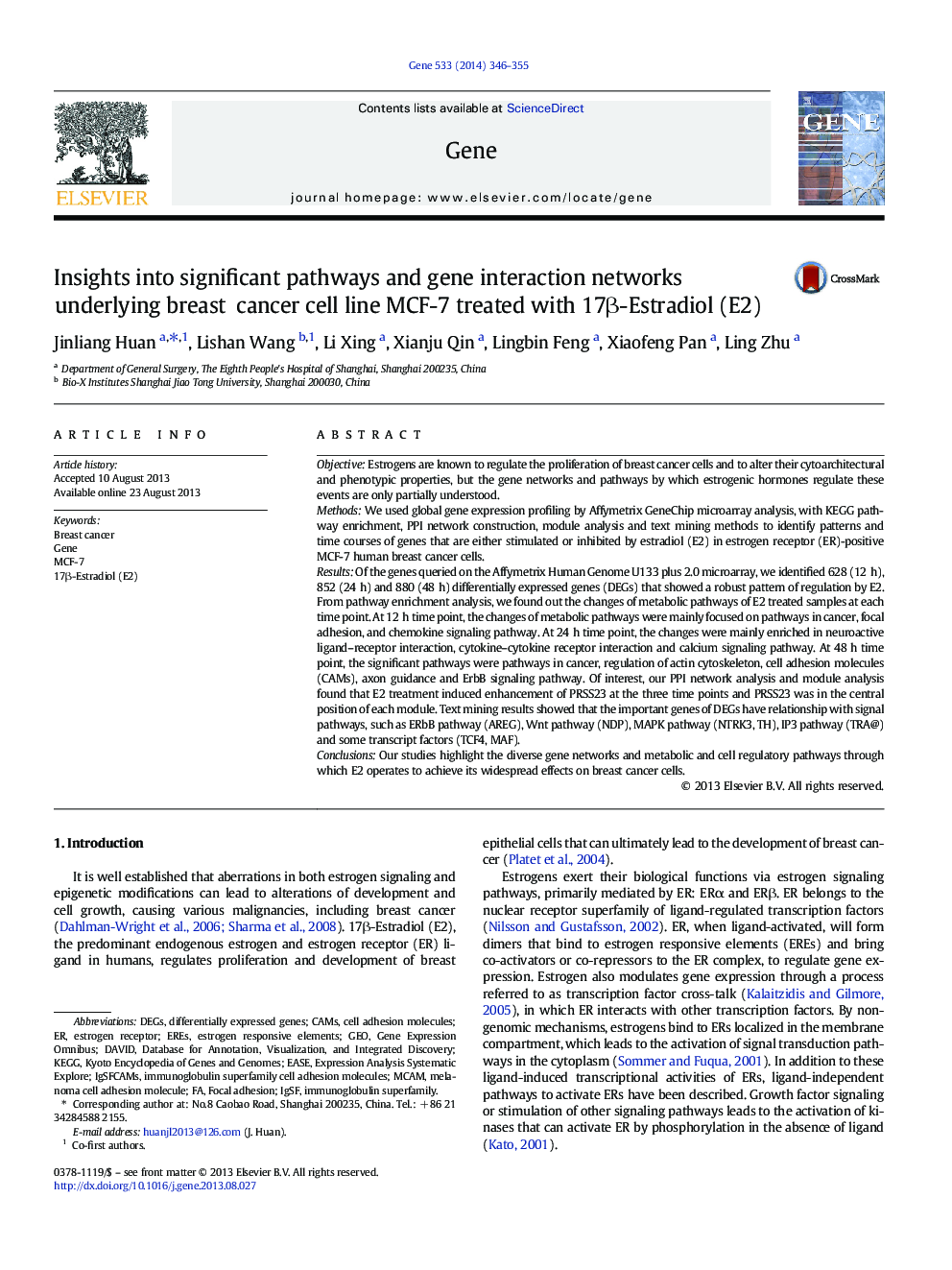| کد مقاله | کد نشریه | سال انتشار | مقاله انگلیسی | نسخه تمام متن |
|---|---|---|---|---|
| 2816741 | 1159950 | 2014 | 10 صفحه PDF | دانلود رایگان |

• We identified the DEGs of 17β-Estradiol treated breast cancer cells at 3 time points.
• Pathways of DEGs were enriched by DAVID.
• Protein–protein interaction (PPI) networks of 3 time points were constructed.
• Modules in the PPI networks were analyzed.
• Breast cancer related genes were explored by text mining.
ObjectiveEstrogens are known to regulate the proliferation of breast cancer cells and to alter their cytoarchitectural and phenotypic properties, but the gene networks and pathways by which estrogenic hormones regulate these events are only partially understood.MethodsWe used global gene expression profiling by Affymetrix GeneChip microarray analysis, with KEGG pathway enrichment, PPI network construction, module analysis and text mining methods to identify patterns and time courses of genes that are either stimulated or inhibited by estradiol (E2) in estrogen receptor (ER)-positive MCF-7 human breast cancer cells.ResultsOf the genes queried on the Affymetrix Human Genome U133 plus 2.0 microarray, we identified 628 (12 h), 852 (24 h) and 880 (48 h) differentially expressed genes (DEGs) that showed a robust pattern of regulation by E2. From pathway enrichment analysis, we found out the changes of metabolic pathways of E2 treated samples at each time point. At 12 h time point, the changes of metabolic pathways were mainly focused on pathways in cancer, focal adhesion, and chemokine signaling pathway. At 24 h time point, the changes were mainly enriched in neuroactive ligand–receptor interaction, cytokine–cytokine receptor interaction and calcium signaling pathway. At 48 h time point, the significant pathways were pathways in cancer, regulation of actin cytoskeleton, cell adhesion molecules (CAMs), axon guidance and ErbB signaling pathway. Of interest, our PPI network analysis and module analysis found that E2 treatment induced enhancement of PRSS23 at the three time points and PRSS23 was in the central position of each module. Text mining results showed that the important genes of DEGs have relationship with signal pathways, such as ERbB pathway (AREG), Wnt pathway (NDP), MAPK pathway (NTRK3, TH), IP3 pathway (TRA@) and some transcript factors (TCF4, MAF).ConclusionsOur studies highlight the diverse gene networks and metabolic and cell regulatory pathways through which E2 operates to achieve its widespread effects on breast cancer cells.
Journal: Gene - Volume 533, Issue 1, 1 January 2014, Pages 346–355